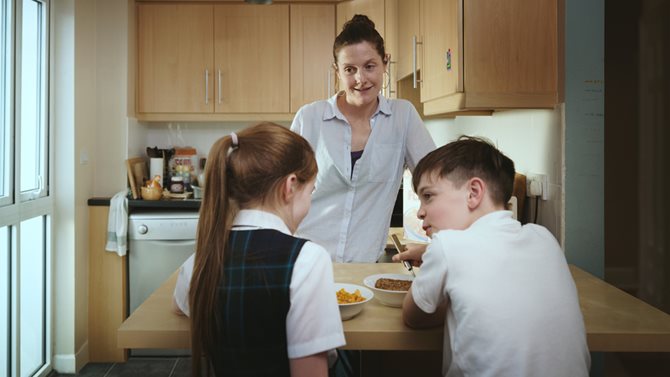What's on Your Child's Plate?

- Project start date: 1 April 2017
- Project status: Completed
- Project type: Nutrition
- Discipline: Obesity
- Author/s: Dr Janas Harrington, University College Cork
- Collaborator/s: Dr Colette Kelly, NUI Galway, Prof Jane Woosidem Queen's Unversity Belfast, Dr Eibhlis O'Connor, University of Limerick
Research objective
- To review the existing literature of the factors that influence the way parents portion food for their children.
- To understand parents’ practices in portioning food and beverages for their children; their mechanisms for judging appropriate portion sizes and the factors influencing these judgements.
- To estimate the proportion of different food groups served to children on the island of Ireland at each meal occasion on a daily basis.
Outputs
Research report
- Title: What's on your child's plate
- Publication date: 12 August 2019
- Summary: Food portion sizes and the proportion of different food groups eaten by children on the island of Ireland.
- Findings:
- Parents generally serve a set amount of food to their children.
- Few parents involved children in cooking, choosing or serving portions.
- The primary concern for parents is ensuring their children are adequately fed.
- Portions are often based on their own child’s appetite, learned from experience.
- Smaller sized plates help them to control the amount that they are serving.
- Parents use their child’s body size as an indicator of appropriate portion size and overall health.
- Larger amounts of healthy foods are given, and smaller amounts of unhealthy foods are given.
- Male spouses and grandparents serve larger portion sizes than mothers.
- Parents are influenced to buy larger portion sizes in supermarkets as they are sold at a lower cost.
- Parents felt that they know how much food that their children need. However, they feel that portion size guidance would be useful for reassurance.
- Visual aids on child-sized plates and the use of household measurements would be beneficial.
- Boys consumed higher quantities of food than girls, however the proportions of the different food groups were similar.
- The evening meal was the eating occasion where the most food was consumed whereas lunch tended to be the smallest meal consumed in ROI. Food consumption more evenly distributed across the day in NI.
- Almost one quarter of all meals included foods and drinks high in fats sugar and salt.
- Morning snacks were generally healthier, primarily based on fruit and veg in ROI and fruit and veg and dairy in NI. However, afternoon and evening snacks tended to be less healthy in both regions.
- Most participants consumed their evening meal at home on weekdays for ROI and NI participants. These proportions decreased at weekend days.
- Portion sizes outside the home were larger in NI and ROI, with a high proportion of protein, high fat, sugar, salt foods.
- The top food groups consumed were foods and drinks high in fat, sugar and salt and dairy products in NI; the top food groups consumed in the ROI were cereals, breads, potatoes, pasta and rice, foods and drinks high in fat, sugar and salt and dairy products.
- Recommendations:
- Children’s food portion guidance should be visual and practical
- Food portion guidance should be targeted at key transition points in child development e.g. preschool years and when the child starts primary school
- Food portion size awareness campaigns should be relevant to fathers and grandparents as well as to mothers
- Families should be encouraged to increase child involvement in food preparation and serving
- Behaviour change campaigns should promote the replacement of foods and drinks high in salt, fats and sugars with food groups essential to a healthy diet
- Targeted messaging relating to snacking is warranted including reference to suitable foods and drinks, when they are given and strategies around snacking
- Behaviour change campaigns should promote parental awareness of the portion size and nutrient quality of foods and drinks produced outside of the home
- The impact/effectiveness of these measures should be monitored.
You can download the report below.
Similar research
- Why are adults giving food treats to children? (2017)
- Let's take on childhood obesity - Evaluation of a 3-year public health campaign (2017)
- Lifetime costs of childhood overweight & obesity (2015)
- Body weight and eating habits in 5-12-year-old Irish children (2011)
- Family eating out events "outside of the home" (2010)




